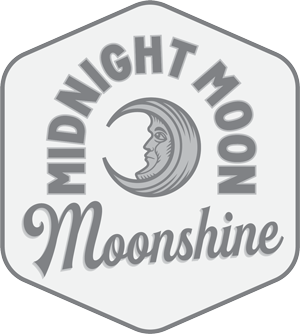“It bugs me when people say I’m driven by money,” Steven Grasse says, racing past the rustic barns and ice-fishing shacks of rural New Hampshire, trying to outrun the coming February blizzard. “I’m driven by wanting to make things.” A former Philadelphia adman, Grasse, 49, employed a singular mix of crass humor and punk-rock aesthetic to sell everything from lollipops to cigarettes with outrageous success (at one point, his annual budget from tobacco company R.J. Reynolds was at least $20 million). But staring down midlife, Grasse is now leaving a two-decade career as a seller of products to finally make his own – a hand-crafted line of experimental spirits distilled in Tamworth, a village nestled deep in the White Mountains. “For me,” he says, “this is the holy grail.”
The world of booze is a perfect fit for Grasse: compact, energetic, and always walking slightly ahead, forcing you to catch up. When Grasse was an adman, his genius for creating “ridiculously detailed product worlds, the kind you can wander around in,” launched both Hendrick’s gin and Sailor Jerry rum into the stratosphere of top-selling mainstream spirits. In 1999, Grasse promoted Hendrick’s by using Victorian clip art to create a faux universe of Terry Gilliam–like classy weirdness. (The gin is now sold in 74 countries.) The same year, he introduced Sailor Jerry, a 92-proof spiced rum, and has since pitched it guerrilla-style on the road with bands like the New York Dolls and the Black Keys (it is now the fastest-growing rum brand in the U.S.). “Grasse probably saw this artisanal trend before any of us,” says Mark Thwaites, creative director at New York advertising company FutureBrand, “and he’s an amazing storyteller – that’s what makes him so good.”
But with his new venture, Tamworth Distillery, Grasse is transcending that mere aura of authenticity for the real thing. He’s leaping beyond the popular nostalgia for Prohibition, all the way back to the 1840s – a wilder, woolier time, when farmers experimented with distillation, turning their leftover grain into whiskey. “Spirits have always been an American thing,” he says. The small-time operation may seem an odd choice for a master marketer, but turning contradictions into million-dollar ideas is Grasse’s peculiar genius. “I want to build something with integrity,” he says.
Grasse has always worked on instinct. At 23, he founded his agency, Gyro Worldwide, in Philadelphia, using a business plan that read, in its totality, “sex, drugs, rock & roll, cool shit.” He promoted a local clothier by plastering downtown Philly with photos of a deranged-looking Charles Manson and the admonition to “go wild and do something outrageous.” The campaign cost Grasse a few clients, but it earned him new corporate mega-accounts like Budweiser, Camel cigarettes, and Coca-Cola. In a 2000 promotional stunt, he created the film Bikini Bandits, starring a quartet of gun-wielding strippers and Dee Dee Ramone as the Pope. Grasse has always been willing to try anything. “Steve is like a chef,” says Dan Abraham, Grasse’s creative director at his new agency. “There’s no recipe – it’s just putting together this and that.”
Then one day about five years ago, Grasse wandered into a liquor store and was stunned by the number of vodkas flavored with infusions like gummy bears and bubble gum and thought, “How is this not marketing to kids?” Not to mention, says Grasse, that “it’s awful stuff, made of all kinds of chemicals.” Unsettled by the liquor industry’s unsavory marketing, Grasse decided to cut in the opposite direction – and create a product he could be proud to sell. “When I became a father,” says Grasse (he and his wife Sonia have a son, 9, and a daughter, 12), “I wanted something I could point to and say, ‘This is what your dad does.’ ”
In 2008, Grasse sold the rights to Sailor Jerry and used the profits to end Gyro and embark on new ventures, including Tamworth Distillery. “These days, when people ask what I do for a living,” he says, “I tell them, ‘I make booze.’ ”
In truth, Grasse’s self-reinvention is a return to his roots. He grew up in Souderton, Pennsylvania, the middle son of a Pennsylvania Dutch family in a mostly Mennonite farming town. His relentless work ethic gelled early: Grasse still starts his day at 4 AM in a home office on the top floor of an 18th-century townhouse he and his wife renovated in the Society Hill neighborhood of Philadelphia. The office itself is a neat distillation of Grassian contradictions – fanatically tidy stacks of glossy magazines, a wall devoted to old-timey black-paper heads in silhouette, his kids’ artwork, and piles of door-stopper history books. Grasse is an obsessive reader but growing up, he wasn’t much of a student. “All I did was drive my GTO around the McDonald’s,” he says, “and drink kegs in the woods.” At 19, Grasse left home for Syracuse University and eventually Miami, where he worked in advertising and settled into a first marriage, which later dissolved. After a couple of years away, though, Grasse decided to head home to Philly – for good. “I like Philadelphia and Tamworth,” Grasse says, “because they’re forgotten.”
In person, Grasse is casual, restless, and well-mannered. A self-described libertarian, he drops big statements routinely into casual conversation: “The government should basically stay out of everything”; “Corporations are malignant cancers”; “If you don’t have a job, you should be cleaning the highways.” Grasse has a bald-man intensity that flashes between Flea excitability and John Malkovich brainy disdain for the things of this world he deems frivolous: American politics (“If I ask you what you do for a living, and you say ‘politics’ or ‘finance,’ there’s something wrong with you”), hipster-trustafarians (“They grew up on cul-de-sacs, and they’re morally bankrupt and they know it”), the British Empire (in 2007, Grasse published The Evil Empire, a cheeky rebuke of all things English), and, maybe especially, mainstream advertising agencies. As Grasse put it more succinctly in a 2010 presentation on Tamworth at a New York advertising convention: “Talk about redemption: I used to be the asshole who sold cigarettes. Now I do this.”
RELATED: The Craft Beer Industry’s Secret Hitmaker
Grasse stops by his 72-acre farm for lunch, winding past an early-settler burial ground toward a rambling 18th-century farmhouse. Mount Chocorua looms over the scene “like a mini Matterhorn,” Grasse says admiringly, as he hikes from the house to a century-old gentlemen’s lodge tucked slightly in the woods. Grasse has left most everything intact, from an antique wooden bowling alley to a tattered menagerie of taxidermied ibex, rhino, and grizzly, to the original hand-carved pool balls. He is rehabilitating the soil, which has been fallow for years, and plans ultimately to provide some of the organic grain and botanicals for the distillery from his own farm.
But even in the genteel countryside, Grasse has courted controversy. After buying the farm, he snapped up the defunct village store and converted it into the Tamworth Lyceum – a country store/arty cafe – and the rundown Tamworth Inn, most of which he leveled to make room for a state-of-the-art distillery in the center of town. It wasn’t lost on the residents of quaint Tamworth, population 2,800, that an outsider was buying up Main Street. Some cursory googling led them to the grimy genius of Gyro and Bikini Bandits and the frightful idea that this man was setting up a mini-mercantile empire in the heart of their town. Grasse suddenly found his necessary permits and approvals mired in two years of town meetings. “That resistance turned out to be a good thing,” says Grasse. “It made us think a little more carefully about what we wanted to do.” There are now plans for extensive community involvement: Tamworth will donate a share of its profits to local preservation efforts. “People can play a part in it,” Grasse says.
At Tamworth, Grasse envisions a “utopian spirits community” inspired by the 1840 New England Transcendentalists, who saw a cultural doomsday in the Industrial Revolution and preached a return to nature. (Grasse may be the only adman bold enough to take America’s most anti-consumerist philosophical movement and bottle it for sale.) Tamworth’s initial offerings will include seasonal spirits distilled from local crops like carrots and bell peppers, as well as wildflowers and mushrooms foraged from nearby woods. Cutting-edge machines like sonic emulsifiers will be paired with 19th-century fermentation techniques. And all bottles will come with elaborate backstories inspired by everything from horse-racing lore to a 300-year-old curse involving dead settlers buried on Grasse’s farm.
For the moment, however, tasting Grasse’s newest earthy, otherworldly spirits will mean a pilgrimage to Tamworth itself – the only place they’re currently available. If the experiment succeeds, Grasse may expand it to other farming communities (he’s been talking to people in Jamaica). This September, when Grasse turns 50, he plans to spend his birthday setting aside a barrel of Tamworth spirits for each of his kids, which he’ll pass on to them in 20 years. “My friends keep bugging me: ‘Are you gonna fly us all to Vegas for your birthday?’ ” he says.
“No. I’m going to rural New Hampshire, and I’m going to barrel whiskey.”



































